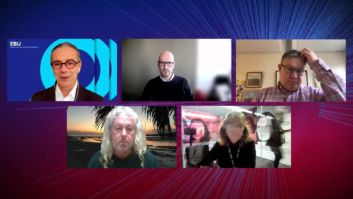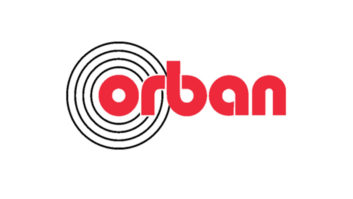The costs of digital
Feb 1, 2001 12:00 PM, By Jim Paluzzi, CBT
I always chuckle when I tell someone that I’m talking to them over a cellular telephone. Invariably, the person on the other end thinks that I’m lying. �You can’t be on a cell phone,� the caller will protest. �You sound too good!�
This is not a plug for some new digital telephone service. The reason I sound so good on my cell phone is that it is an analog cellular telephone, an old-fashioned analog phone, with few bells or whistles. No Web surfing on this phone; no stock quotes or e-mail, either. It’s just a phone, and for this application, this old analog phone works great.
Why does my analog cell phone sound better than the high-tech digital cell phones that have replaced it in the marketplace? Surely, digital must be better, right?
The digital phone could sound better than the analog phone. There is no reason why digital phone users should have to endure unnatural voice sounds, as well as that primitive delay (or latency) that makes you feel as though you are talking with someone from Mars rather than across town. Did you ever have that feeling that you and your caller should be saying �over� after you are finished speaking on a digital cell phone � just to prevent stepping over each other’s words?
The reason digital cell phone audio sounds so poor is because the cell phone companies are stuffing many telephone calls into the same channel bandwidth formerly occupied by a single analog cell phone call. When you place more telephone calls into the same bandwidth, you can handle more users � and stand to make much more money. As long as most customers are willing to tolerate marginal audio quality and latency in return for more features (like free long distance or web surfing), the cell phone companies can sell more cell phone service to more customers, using the existing available bandwidth.
This cell phone scenario illustrates the issues we face as radio managers. We are often called upon to make major decisions regarding the acquisition of new technology for our stations. Whether the purchase in question is a new audio console, a new automation system, or a digital studio-to-transmitter link, the right answer does not always involve �going digital.� Just as switching to a digital cell phone does not guarantee that you will sound better to your callers, purchasing digital broadcast equipment does not necessarily guarantee improved audio quality.
As a manager, make sure that any decision regarding the purchase of a new digital product is based on three factors: sampling rate, compression, and bandwidth. The major principle to keep in mind when evaluating these factors: in the digital world, you cannot get something for nothing. For every benefit, there is a tradeoff (and it is usually a capital or an operating expense).
Sampling rate
Digital audio is nothing more than a series of audio snapshots. In the visual world, you know that the more snapshots you take of a house that is for sale, the more accurately you will be able to represent that house to someone when you show those pictures later. Similarly, the more audio snapshots taken of an audio passage, the more accurate the reproduced sound. The number of audio snapshots in a second is the sampling rate, and in a perfect world, you want as many of them per second as possible.
The problem with audio using high sampling rates is that it takes either lots of bandwidth for transmission or lots of storage capacity to handle that sound. Here comes our first tradeoff: do we cut back on the sampling rate, or do we pay more for additional bandwidth? There is another possibility: do we cheat?
Compression
There are many ways to explain audio compression. The simple one is that compression is cheating. Human hearing is imperfect, and we can eliminate a lot of audio data from a sound before the ear can detect the loss of quality. Accordingly, audio compression systems attempt to eliminate as much audio data as possible to save on bandwidth or storage requirements. (For more on perceptual audio encoding, see How it Works on page 50.) This is how digital cell phone services can squeeze so many more users into a bandwidth that can only accommodate a single analog user: telephone audio is compressed, and therefore, most of the audio quality is eliminated. How far can you go in compressing broadcast audio?
To illustrate this compression problem, a national producer was uplinking a radio program from one city, using a compressed 128kb/s stereo satellite channel (a relatively small bandwidth for high quality audio). Several hours later, that program was time-shifted and uplinked on another compressed 128kb/s satellite channel from another city.
This double compressed audio signal sounded fine at stations using analog studio-to-transmitter links. However, at stations using digital STLs, the heavily compressed audio could not survive yet another digital process. As a result, listeners heard a hollow, swishy, otherworldly sound; the result of digital artifacts. Listeners know this problem as poor quality audio. The producer increased the satellite channel from 128kb/s to 256kb/s (at greater cost, of course) and the problem went away.
If your station broadcasts news and information programming, where much of the audio has already been compressed (from ISDN, heavily compressed satellite or telephone feeds), you may be better off sticking with your present analog STL until compression technology improves.
Bandwidth
Just as there is only so much spectrum available for cellular telephone service, broadcasters have to live in a world of bandwidth limitations. A studio-to-transmitter link is limited as to how wide the channel can be. Similarly, there is a limit as to how much satellite spectrum you can purchase, how many T-1 digital circuits you can afford to lease, or how much you can invest in audio file storage capacity.
Few customers would pay for a high-audio quality digital cell phone service that charged $400 a month for service. Similarly, few managers would pay $10,000 a month for a studio-to-transmitter link for their station. In the end, the decision must remain a tradeoff: how much compression must you accept for handling your audio with the amount of bandwidth (or hard drive storage) that you can afford to purchase to accommodate your desired sampling rate?
This digital tradeoff formula is a management issue and not merely a decision for the engineers. While one could easily infuse any of the above concepts with tons of technical complexity, the general concepts are simple, straightforward, and worth every minute of time that a manager can devote to better understand them.
Does it make sense to invest in upgrading your facilities to digital? Usually, the answer is yes. Why? Because, sometimes, going digital will improve the quality of your air sound; in other situations, digital technology may save you money. Rarely, however, will you accomplish both.
Jim Paluzzi, Ph. D., is general manager of Boise State Radio, Boise, ID, Professor of Broadcast Technology at Boise State University, and serves on the National Public Radio Board of Directors.
Managing Technology in April:
Engineering 101 for Managers












